Choosing The Right Cabinet Hardware
When it comes to home design, the details often make the difference between a good space and a great one. One of the most overlooked yet impactful elements in a room is the cabinet hardware. Whether you’re renovating your kitchen, bathroom, or any other space with cabinetry, selecting the right hardware can elevate the entire aesthetic of the room. This guide will walk you through the essential considerations for choosing the right cabinet hardware, ensuring your selections are both functional and stylish.
Style and Shape
The style and shape of your cabinet hardware play a crucial role in setting the tone of the room. With various options available, from knobs to pulls, or even a combination of both, understanding your choices can help you make an informed decision.
Knobs
Knobs are the classic choice for cabinet doors. They offer a simple, yet elegant way to open and close cabinets. Available in a myriad of designs, knobs can add a subtle touch of personality to your space. Consider knobs if you’re aiming for a traditional or minimalist look. They are particularly effective in smaller spaces, where their understated design won’t overwhelm the room.
- Pros: Easy to install, versatile, and cost-effective.
- Cons: May require more effort to use compared to pulls, especially on heavy doors or drawers.


Pulls
Pulls, on the other hand, offer a more substantial grip and are typically used for drawers. They are available in a variety of lengths and styles, making them an excellent choice for those who want to make a bolder statement. Pulls can be aligned either horizontally or vertically, depending on your design preference and the function they serve.
- Pros: Easier to use, especially for larger or heavier drawers.
- Cons: Generally more expensive than knobs and require more precise installation.
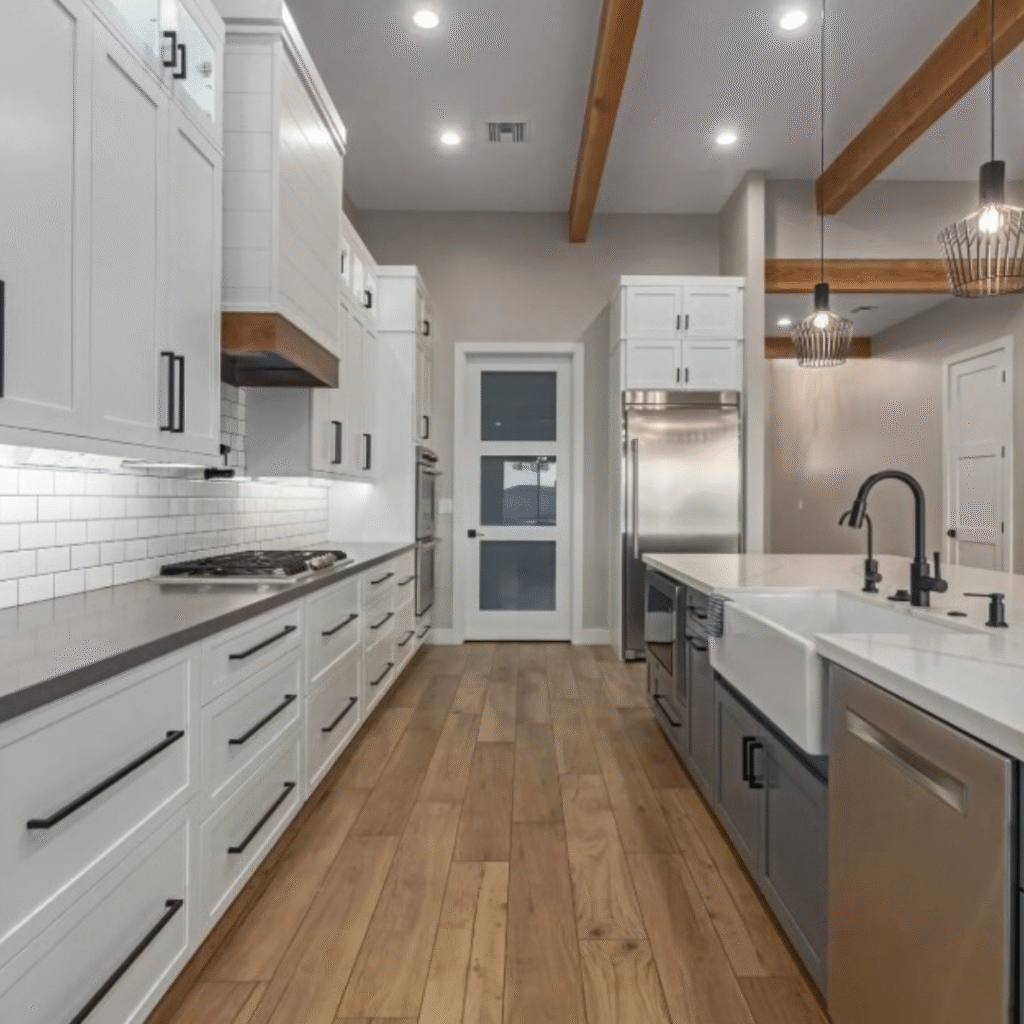
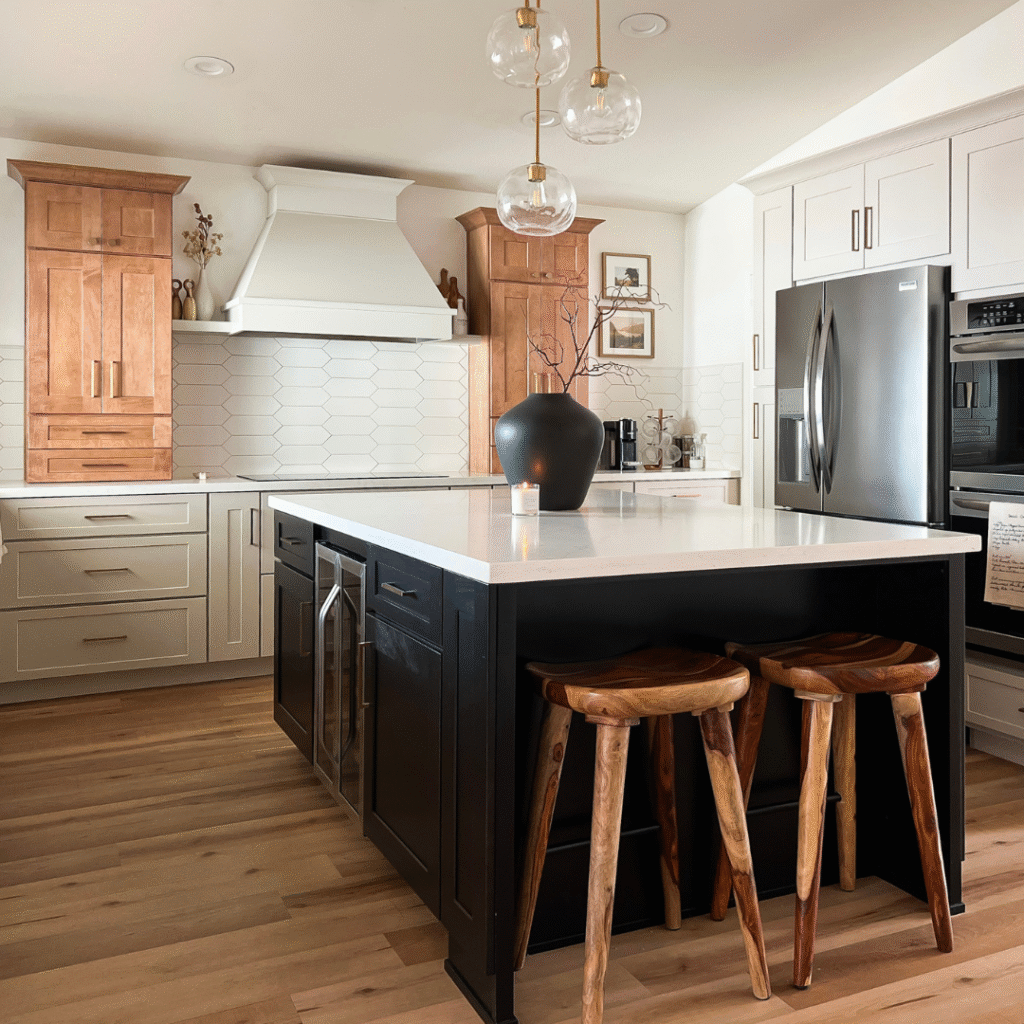
or Both?
Why choose when you can have both? Many modern designs incorporate a mix of knobs and pulls to achieve a balanced look. For instance, knobs can be used on cabinet doors, while pulls are reserved for drawers. This approach not only adds visual interest but also enhances functionality by using each type of hardware where it is most effective.
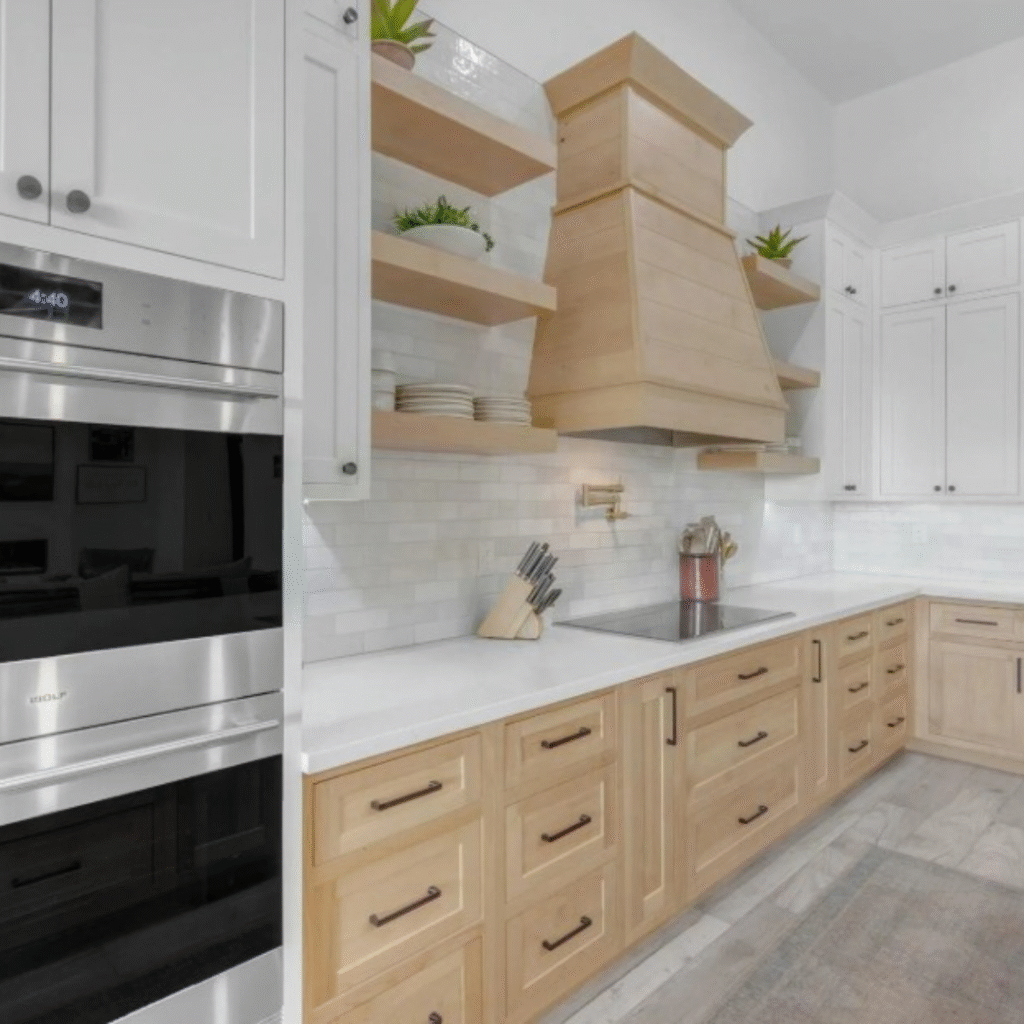
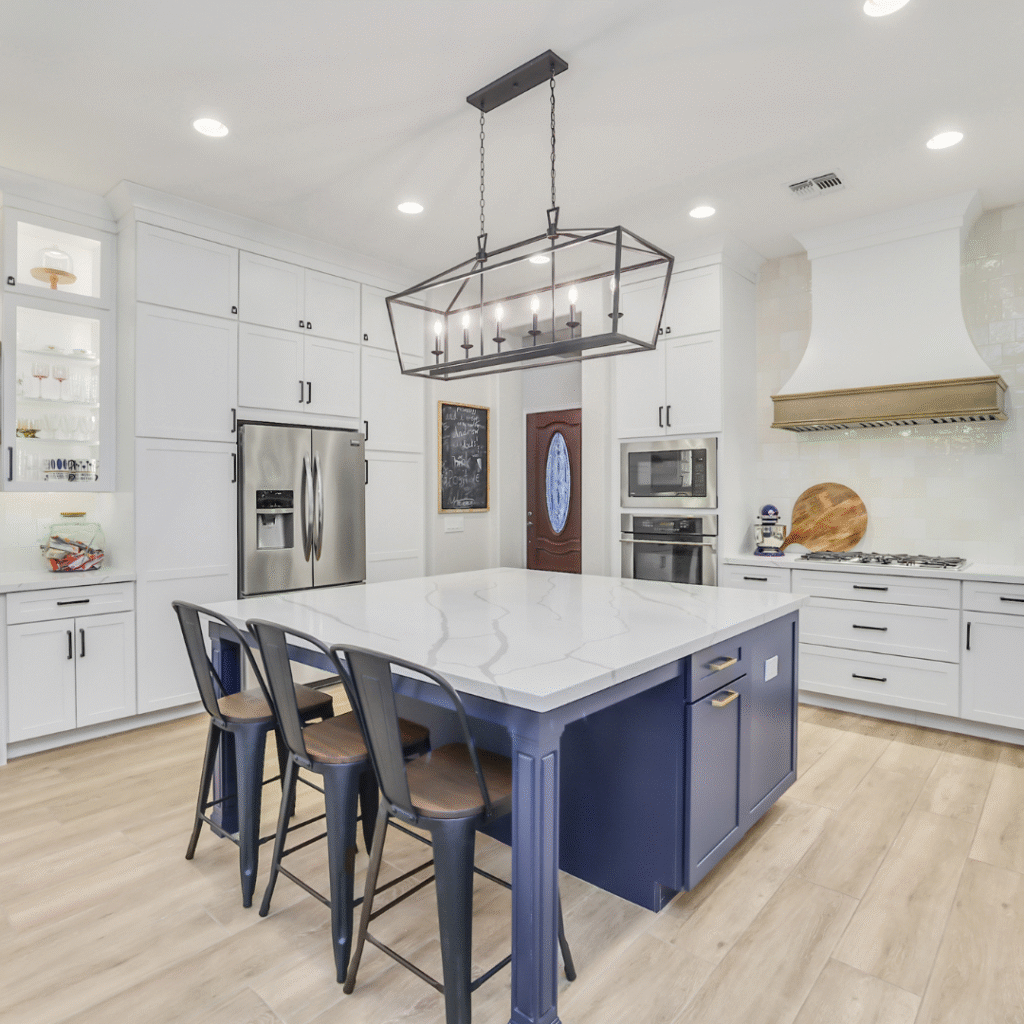
Sizing
Getting the size of your hardware right is crucial for both function and aesthetics. The size should complement the size of your cabinets and drawers while also being comfortable to use.
Proportions
When selecting hardware, consider the proportions relative to your cabinetry. The size of the hardware can affect the overall look and feel of the space. Too small, and it can appear lost; too large, and it can overwhelm the design.
- Drawers: A rule of thumb is that pulls should be about half or less the width of the drawer. This proportion ensures that the pull is neither too dominant nor too diminutive.
- Doors: For cabinet doors, the pull should be roughly one-third or less of the door height. This sizing ensures that the hardware is functional without overpowering the design.
Placement
The placement of your cabinet hardware is as important as the style and size. Correct placement ensures that your cabinets are not only easy to use but also aesthetically pleasing.
Doors
For cabinet doors, placement can vary depending on the design style and personal preference. Here are some common placement strategies:
- Vertical – Center with Stile and Rail: This placement centers the knob or pull between the vertical stile and horizontal rail of the cabinet door, offering a balanced look.
- Vertical – Center with Stile and Level with Rail: Here, the hardware is centered with the stile and aligned with the rail, providing a consistent line across the cabinetry.
- Horizontal – Center on Rail: This placement aligns the hardware horizontally across the center of the rail, which is particularly useful for modern or contemporary designs.
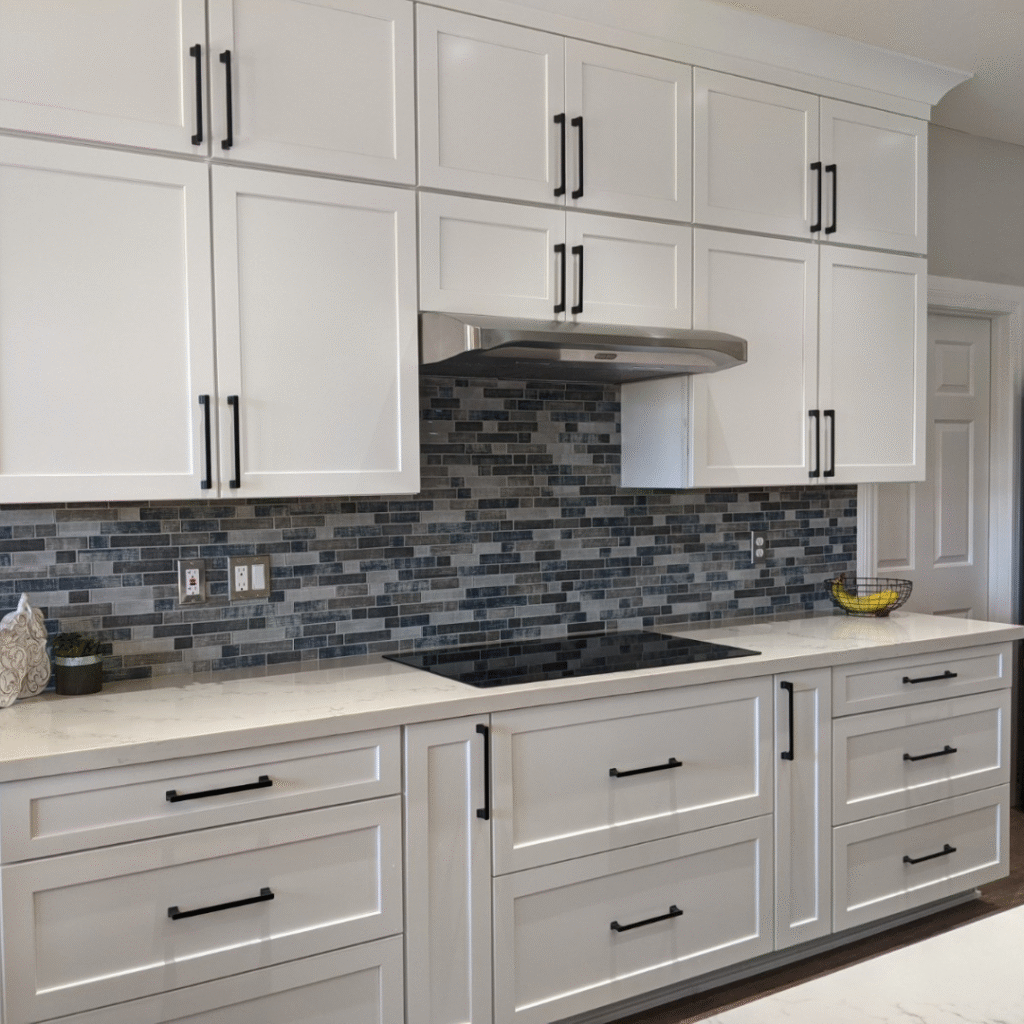
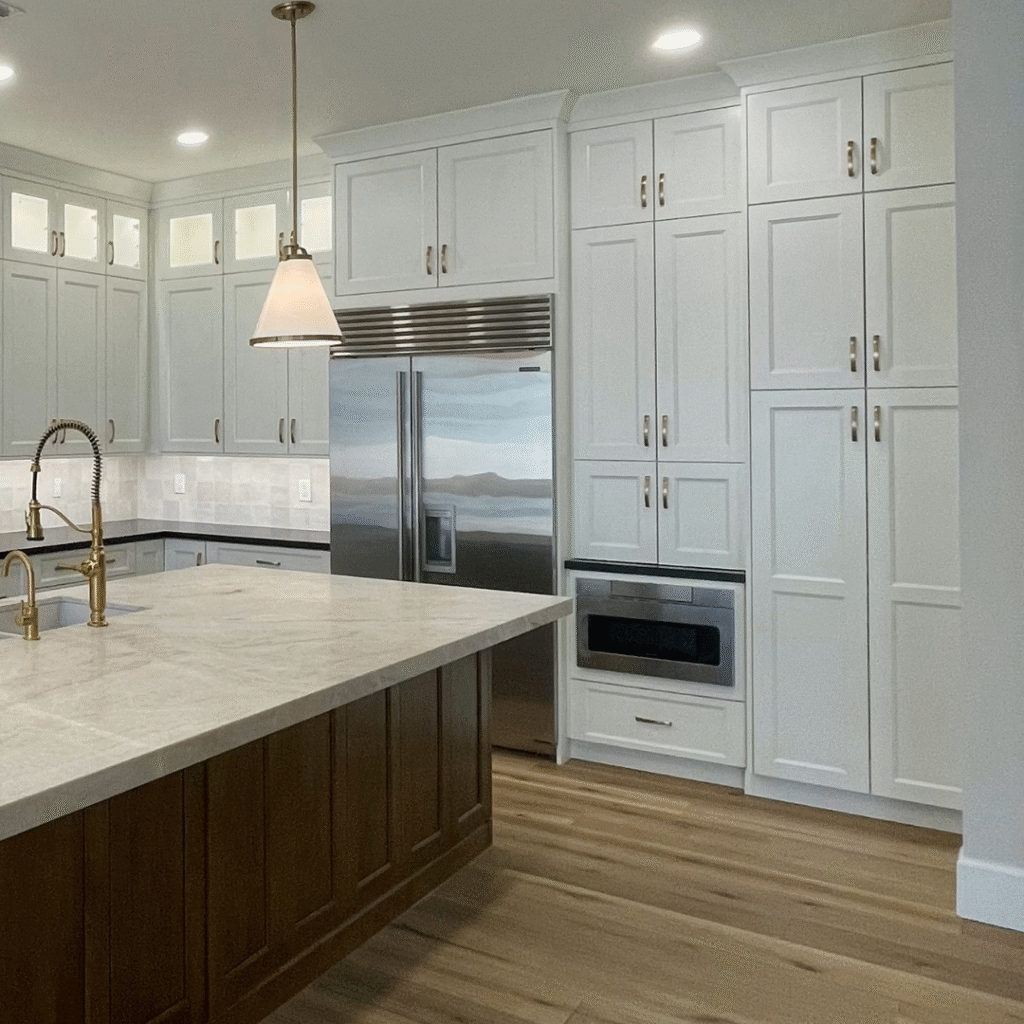
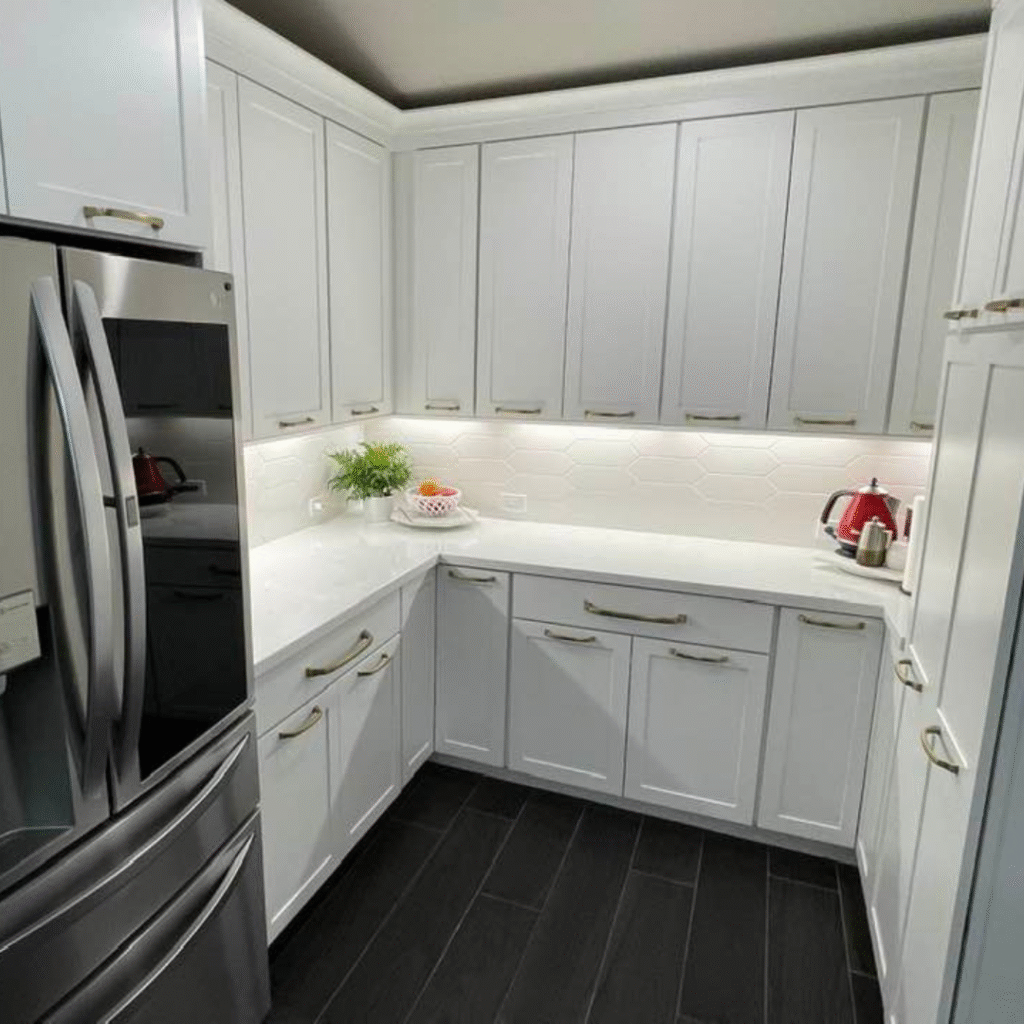
Drawers
When it comes to drawers, placement can vary based on the size and design of the drawer.
- Center: Placing the hardware in the center of the drawer provides a classic and symmetrical look.
- Center Towards the Top: Alternatively, hardware can be placed centered towards the top of the drawer. This is especially effective for deep drawers, as it makes them easier to open. The hardware can be aligned with the rail or the top of the panel to maintain visual consistency.

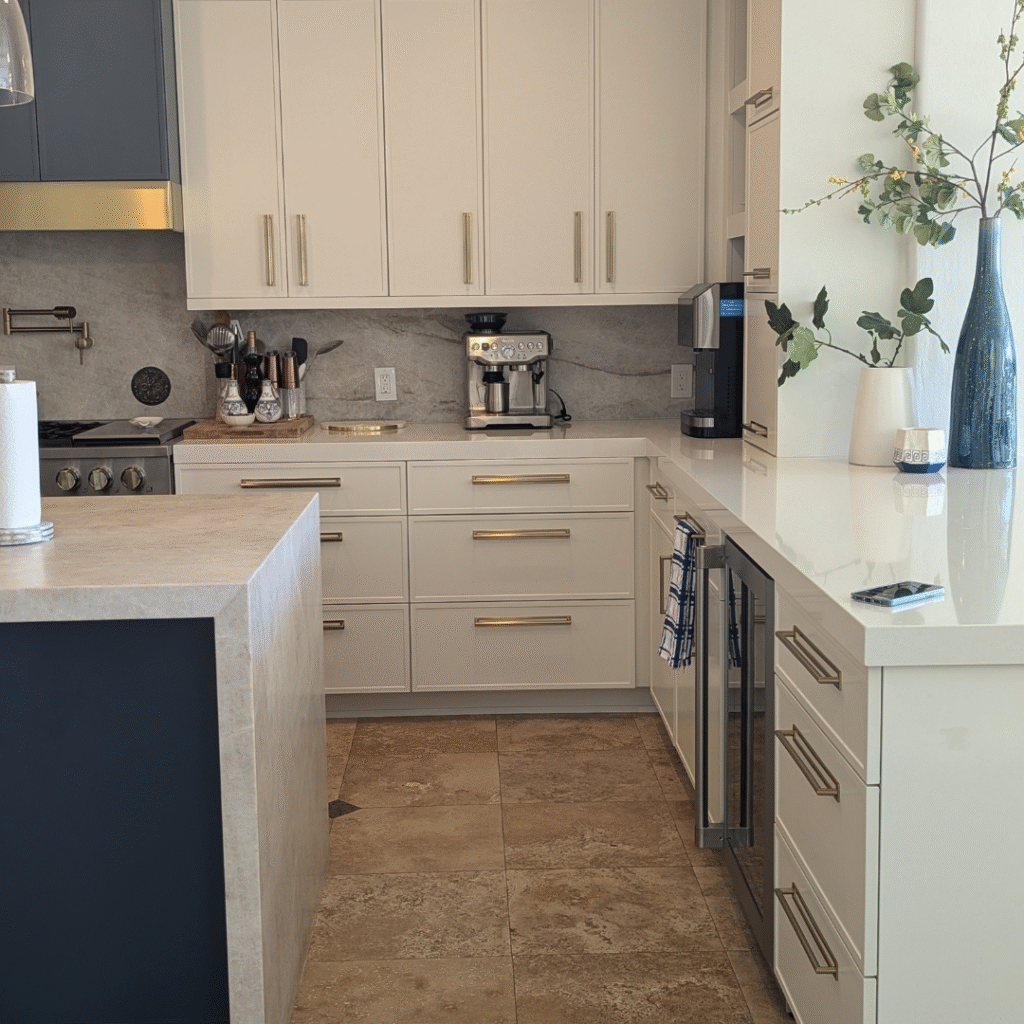
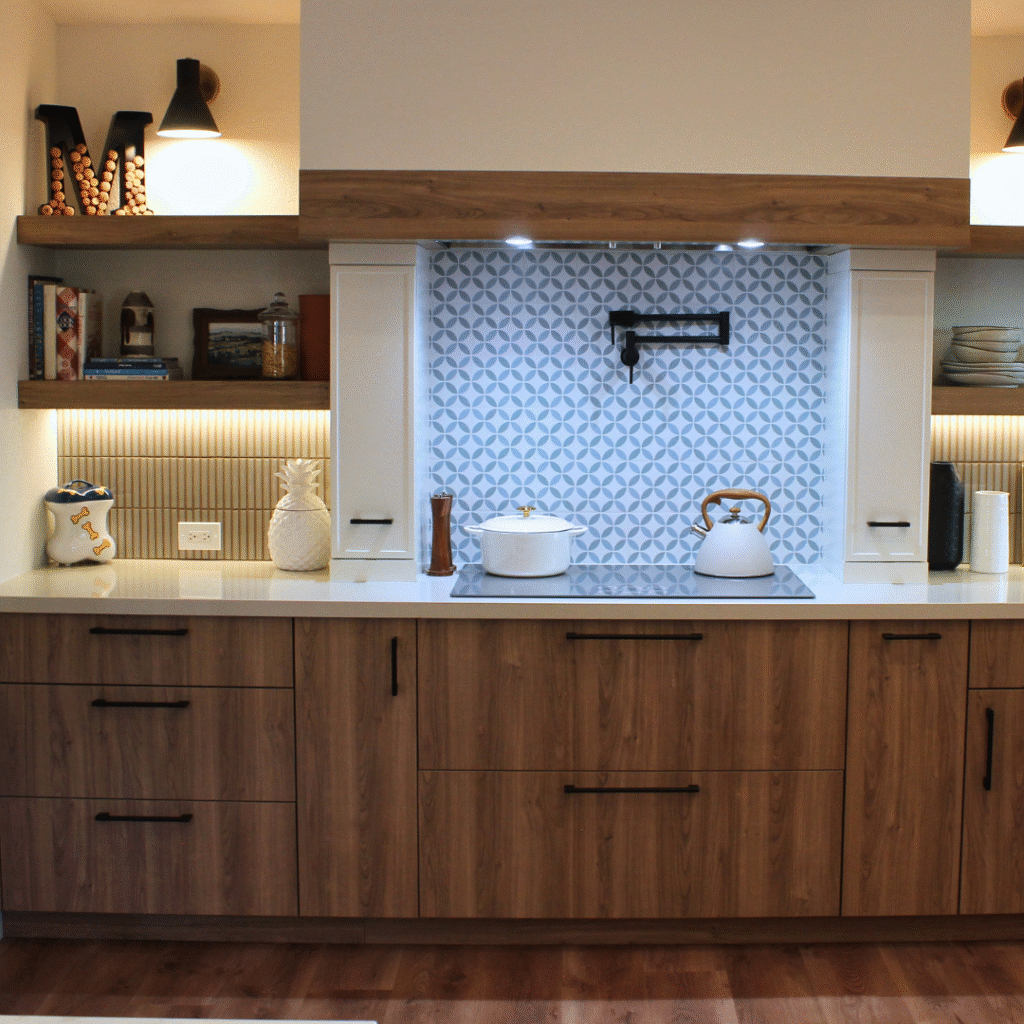
Finish
The finish of your cabinet hardware is the final touch that brings your design together. It can match other elements in the room or serve as a contrasting detail to add visual interest.
Considerations for Finish
- Matching Elements: Choose a finish that complements other fixtures in the room, such as faucets, lighting, or appliances. This creates a cohesive look that ties the space together.
- Contrasting Elements: Alternatively, opt for a contrasting finish to add a pop of color or texture. For example, matte black hardware can make a striking statement against white cabinetry.
- Durability: Consider the durability of the finish, especially in high-use areas like kitchens. Some finishes are more resistant to wear and tear, making them ideal for busy households.
Conclusion
Hardware may be a small detail, but it plays a significant role in the overall design and functionality of your space. By choosing the right knobs, pulls, and placement, you can transform any room into a masterpiece of style and practicality. Ultimately, the hardware you choose is a reflection of your personality and style. It’s an opportunity to express yourself and create a home that feels uniquely yours. So, embrace the process, trust your instincts, and enjoy the transformation as you unlock the style potential of your home
We invite you to visit our showroom, where you can explore our extensive collection of hardware firsthand. What style resonates with you? How do you envision your space transforming with the right touch? We’re here to help you find the perfect hardware solutions tailored to your needs. Let’s bring your vision to life together!
Latest Post
- Project Spotlight: 97th Way
- Project Spotlight: Bell Rd.
- Contemporary Design: TFL, Reconstituted Veneer, and Acrylic Face Off!
- Project Spotlight: Zapata Dr.
- New Products: Carpet
Follow Us
